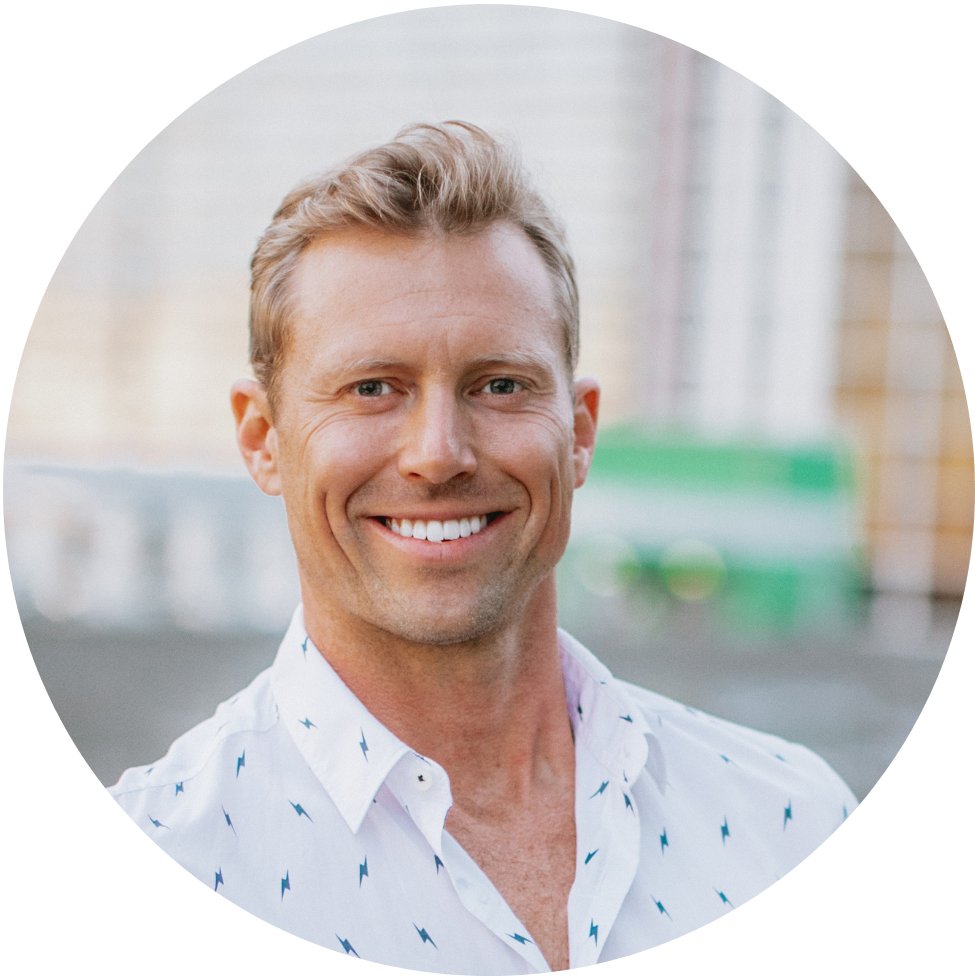Pilots make up a large part of the demographic, like doctors in a sense. These pilots are so good at their job that they need someone who can help them with other things like real estate. This is where Tait Duryea comes in. Tait is a pilot and real estate investor. He also hosts the Passive Income Pilots podcast and is the founder and CEO of Turbine Capital. His goal is to enable pilots and other high-income professionals to invest in real estate without becoming a landlord. He believes that you can fly solo in real estate, but it’s always safer to fly with people who know what they’re doing. Tune in for more of Tait as he joins Sam Wilson in this conversation.
—
Watch the episode here:
Listen to the podcast here:
From The Skies To Real Estate: Exposing Pilots To Real Estate Investing With Tait Duryea
Tait Duryea is a pilot, real estate investor, and General Ambassador of financial independence. He bought his first property at age 25 and has since accrued a decade worth of both active and passive investments. They spend over 45 countries. He’s skippered sailboats in the Mediterranean, Aegean and Caribbean.
He’s an avid surfer, skier, snowboarder, world traveler, and adventurer and is on a personal crusade to replace his flying income with passive cashflow from real estate. He also hosts the Passive Income Pilots Podcast and is the Founder and CEO of Turbine Capital, a private equity firm that enables pilots and other high-income professionals to invest in real estate. Tait, welcome to the show.
Thanks for having me on. I appreciate it.
The pleasure is mine. The same questions I ask everybody who comes on the show. Can you quickly tell us where did you start, where are you now and how did you get there?
I started with that purple book, Rich Dad Poor Dad when I was about twelve years old. I got into the idea of financial freedom super early on. I was obsessed with the idea of real estate. I’ve always loved the idea of passive income from real estate. That was the plan before I even became a pilot. The flying bug bit me when I was in college and went down that road. The real estate bug never left and I bought my first rental property when I was about 25 years old and dabbled in it for a number of years.
I bought some houses and some condos but I didn’t dive in until about a couple of years ago. I started buying some multifamily and then pivoted to the passive side. I’ve been investing as an LP ever since as I realized that I’m a busy W-2 professional. It’s a little bit more scalable and frankly less risky to be an LP in some other people’s deals who are professionals in whatever asset class that is. That’s where I’m at now.
What do you do? You’re still a pilot, right?
I am full-time.
Talk to us about that. Talk to us about what it is you’re going to do now.
There has to be someone who is helping pilots with real estate. It’s such a large professional demographic.
I’m a pilot for Hawaiian Airlines. I’m also a Check Airman and I teach in the simulator. After I jump off from this show, I’m going down to the Simulator Center and I’m teaching in the simulator.
What is a Check Airman?
There are two levels of instructors. There are instructor and evaluator pilots. I’m qualified to evaluate other pilots and I can check them out on the line.
Not too terribly different than what you’re doing on the real estate side. You are being a Check Airman for the people that invest with you.
We’re not the ones designing and building the airplane like the operators would be the Boeing and Airbus of the world that are designing the aircraft and building it but we are inspecting it for airworthiness. We’re looking at those deals, taking a deep dive, pulling the engine apart, and making sure it looks good before we go fly it. The best way to put it would be before we get on it as passengers or as LPs.
You’re saying, “This aircraft is airworthy, everybody gets onboard because the pilot has a vested interest in making sure that everyone gets there in one piece.” That’s the same thing you’re doing on the investment side. That’s cool. I love that. I know you said you’re a busy W-2. Talk to us about what it was like to get into your first investments on the passive side but then realize that you could grow that side of your business as well by bringing other investors along.
Originally, it was active in my own deals. I started scaling up into some multifamily on my own and realized that this is anything but passive income. For example, I did a presentation, and to make this point, I searched in my email for the name of my property manager for this commercial property at 186 emails in 6 months when I was doing the BRRRR. I had a big innovation going on and I needed all stuff back and forth with them to communicate with the lender and the contractors. One hundred eighty six emails over six months and each one of those threads had multiple emails within it.
I’m thinking to myself, “This isn’t very scalable and isn’t a hugely beneficial use of my time.” That’s when I pivoted over to the passive side. To your question, which was, “When did you go from passive investing on your own to passive investing with a group with our fund?” It was a few years ago. I met some great people around the Conference Circuit. One of them was Dr. Peter Kim, who has a private equity group for physicians.
He was saying, “You could do something like this for pilots.” I thought to myself, “There has to be someone who’s doing that for airline pilots because it’s a large professional demographic who are very similar to doctors in a lot of ways and no one was doing it.” I sat on the idea for about a year and I thought, “This is a cool thing to bring to a professional demographic who traditionally has less real estate exposure than they probably should in their portfolios.” The idea simmered for a little while, and about a couple of years ago, I started working on it and we launched about quarters ago.

You enabled pilots and other high-income professionals to invest in real estate. How does that conversation happen? Is this something where you’re sitting in the cockpit talking to other pilots going, “Invest in real estate,” what’s that look like?
The name is starting to get out there and people ask me. We’ll be sitting in the cockpit and they’ll say, “What is this?” I’ll tell people very straightforward, “It’s a private equity group that I put together to help guys as you invest in real estate. This isn’t necessarily a replacement for going out and buying your own rental property. If you have the wherewithal, the motivation, and the desire to go out, buy rental property and make those deals happen, do that,” but also look at the passive side. Especially for the guys and girls who have kids, busy schedules, they’re traveling and flying a lot.
It’s often a lot of parallels with the doctor or attorney crowd where they’re good at their day job. They make great money and it doesn’t necessarily make sense to go out and spend a couple of years learning the ropes of real estate because real estate is hard. It’s easy to kick your feet back after you’ve done it and talk about how great it is but it’s a slog to get a real estate investing business going to learn the ropes, build your network, find your market, put out offers, get deals under contract and do the thing.
If you have the motivation to do it, fantastic but if you don’t, this is a great way to get some exposure and some great returns without having to do anything. Where we come in is we’re going to do the vetting process for you. We have a fund and a bunch of power in numbers so that we can vet these deals properly before they go to our investors.
Are you running a fund or are you guys doing the fund of funds model?
We’re doing a fund of funds model now. We may co-GP with some in the future but now we’ve done strictly fund to funds, which is great because we’ve been able to get into some alternate share classes that have better return profiles. That’s essentially how my company ends up making money in the long-term.
We take some of that Delta between the two share classes. If a minimum investment direct sponsor was $50,000 with a 60/40 split, and then there’s an alternate share class, let’s say a B-share class that has a 70/30 split with a $2 million minimum, we’re able to pool capital by that B-share class, and then all of us benefit from that. Our investors get a slightly better return than the direct sponsor. We make the majority of that Delta, which is great for the sponsor and for us as well because they know that they can count on us for capital if they bring us deals with pass the muster.
It’s interesting. Not every sponsor is going to do that. Do you work that out in advance with the sponsor and say, “This is the way I want to participate?” How did that conversation come about and how did you end up structuring it that way so that you don’t end up costing your investors’ money? One of the drawbacks to a fund of funds is to add additional layers of fees, typically.
That’s the drawback of the fund of funds, you’re playing middleman. I certainly don’t want to be a middleman because middlemen are disposable. You’re writing yourself an end date for existence because as the world gets more democratized, connected and transactions flow more efficiently, middlemen are going to disappear. We truly want to be a win-win operation. Most sponsors that I’ve talked to are definitely open to giving better splits to higher sums of capital.
Don’t be a middleman. Middlemen are disposable. You’re writing yourself an end date for existence.
If we’re investing $2 million, $3 million or $5 million, we’re investing as 1 investor, not 100 because the entity that we’re putting together is the investment entity. The sponsors that I’ve talked to so far that I have relationships within the business typically ride in these alternate share classes from day one. You do have to get ahead of it. You can’t negotiate that after the fact, once it’s gone out to their list, you can’t go back and say, “We’re going to ride in this extra share class if you invest this much.” It needs to be negotiated ahead of time with whatever response are you going with.
For anybody reading this, you might be thinking, “That’s a cool idea. I might go to raise X, Y, Z money, and then we could get an alternate share class.” You need to get ahead of that. We have long before legal docs have ever been drafted because once those are inked, once people are signing docs, that ship has sailed.
You said something that I wanted to circle back on when you’re talking to some of your potential investors or other pilots like, “If you’ve got the capacity to go out and buy rental property on your own, and that’s what you want to do, this may not be for you.” I would disagree with that but tell me why you say that.
Let me clarify. I’m certainly not saying this wouldn’t be for you. There are different buckets. There’s potential if you’re buying your real estate and you’re doing it well, that you can make an infinite return on your money. That’s better than a typical 15% IRR that you’re seeing in the syndicated world because you’re splitting those profits with the operator. The benefit is that it’s a much lower risk profile than doing it yourself because it’s a professionally managed deal.
Not to pick on doctors but the Bonanza is a high-performance aircraft that was nicknamed The Doctor Killer in the 80s because much of these hiring physicians would get their pilot’s license, buy a nice high-performing aircraft and they’d ended up killing themselves because they got the hang of it but they weren’t pros. They’d get into some, whether they couldn’t get out of and had some a system malfunction or an engine failure that they didn’t handle properly. That what it’s like if you’re investing in real estate on your own.
I experienced it firsthand. When I started scaling to multifamily, I missed some things that a professional would not miss that costs me a significant amount of money. While I’m making a fantastic return cash-on-cash because I did the BRRRR deal, the Buy, Rehab, Rent, Refinance and Repeat, so I pulled most of my cash out of the deal. When you look at the cash-on-cash return, it’s healthy but there’s a much higher risk in me going out as that weekend warrior and flying that small airplane versus being a passenger on a professionally flown aircraft.
That’s how I look at it in terms of risk-reward. You have the potential to earn 40%, 50% or 100% infinite return on capital if you’re doing it yourself, you’re willing to put in the work, roll up your sleeves and do it. If you’re not in a W-2 profession where you’re making a whole lot of money, it may be a faster way to financial freedom than being an LP. If you’re making plenty and you’re busy, there’s no better way. I agree with you there.
That’s very interesting because one of my ten-year goals even in this business, as active as I am, is I want to be 100% LP. In ten years, it’s where I want to be because it makes sense to me, I’m in LP in lots of different asset classes now. I’ll tell you I love every minute of it because you see the deposit in your bank account every month and you go, “That was easy. I’ll keep letting that happen.”
To your point, there, it costs more money on the front end. You can leverage a single share of most investments. Let’s call it $50,000. That’s my typical sponsor minimum. You can leverage that into more real estate than you could in a passive investment and get higher leverage on that, either way, it’s an easy transaction. It’s incredible. Talk to us about the mistakes that you had made early on that if it were a professionally run syndication, they would’ve caught.

I started scaling up into some personal multifamily deals. One, in particular, was in South Carolina. It happens to be six times zones away from where I usually am here in Honolulu. There were some little things that I missed. One was the opportunity to re-trade during our contract due to some problems with the roof, which I didn’t end up re-trading very effectively.
A professional operator probably would have done a better job of being a tough negotiator there. Another one was property tax. I had no idea that in South Carolina, there is a one-time form that if you submit to the tax assessor’s office, you get a 25% discount on your investment property taxes, and it’s only submittable in the first year of ownership.
My broker, property manager, and closing attorney didn’t tell me. Nobody mentioned it. It just went by and now I’m paying 25% more in property taxes than I would be had I known that. In annual expense, that is going to recur every year as I own that property simply because I didn’t submit this stupid one-page form.
Those are the things that are easy to miss as a weekend warrior, even when you’re fairly well versed in the real estate industry that a professional operator would never have. They’ve got a 600 point checklist and all the relationships and they’ve done this day in and day out. They’re pros. That’s a lesson learned. If anybody buys property in South Carolina, look for that form.
It’s small stuff like that. I want to say, “It’s little foxes that steal the grapes.” That’s an annual bill, so you get reminded every single year and you’re like, “I could have lit that on fire and had more fun.” You’ve got some warmth out of it, at least at this point. You’re just losing money every year. That sucks. Those are painful lessons though, but I don’t know anybody as a sponsor.
That’s one of my questions. When I’m interviewing a sponsor for me as a personal passive investor is, “Tell me about a time you lost money and how did you handle them?” They come back to me and they’re like, “We never have,” and it’s the end of the phone call for me because it’s on my checklist. I’ve got 100 and some questions I usually ask.
It’s like, “If they’ve never lost money, I don’t want to put my money with somebody and be the first time they did.” Kudos to you for taking it on the chin for the rest of us, too. If you’re reading and own a property in South Carolina and it’s been less than twelve months, go look that form up. One thing we haven’t talked about yet is what asset class you’re in?
I launched this company summer of 2020, and because we were in the heart of COVID and we weren’t sure what was happening with the economy, we chose self-storage. To throw fuel on that fire, I also had a preexisting relationship with a fantastic self-storage sponsor, so it made sense to raise for self-storage. Since then, it’s been on rinse and repeats with the storage industry. There’s a fantastic consolidation going on now in the self-storage industry and one that’s historical. It’s one of these asset classes that is earlier in its maturity cycle than multifamily.
A lot of mom-and-pop operators out there that aggregators are coming along, putting into portfolios and rolling them up into large national portfolios that they can then sell to Blackstone, Cascade, KKR or REIT. A lot of opportunities there in terms of amassing large portfolios of storage and rolling it up to REITs. We’ve stuck with the self-storage asset class but by no means, I want to pigeonhole us as a fund into a self-storage fund. We’re definitely on the hunt for about a half dozen other operators who we can marry and feel comfortable raising for across a number of different asset classes.
There’s a fantastic consolidation going on now in the self-storage industry. It’s the asset class that is in its earliest maturity cycle.
Does it give you any pause or any concern if there is a shift in the buying winds of the large companies that are consolidating or buying this consolidation? Has that any concern for you and where the prices of these assets may have?
Yes, and the cap rates are getting a little bit ridiculous, to be frank. We hedge our bets, thereby making sure that the underwriting shows expanding cap rates and conservative exits.
What are some of the ways that you see adding value into self-storage space? It’s because even if cap rates are compressing, there has to be a way where you say, “This is what we’re going to do in order to add value to this project and then how to make it a more worthwhile project.”
We are simply the passengers in these deals, but the excellent aviators who are at the helm who we’ve had a lot of fun working with over the years, their business plan beyond pretty much every project that they find are to buy facilities with vacant land. They’ll spend some money initially to improve all deferred maintenance, paved drive isles, replace any swing doors with roll-ups, renovate the office, new fencing, security, lighting, make it a nice place to be and that people feel safe in.
From their bump rents to market, do a lot of cross-marketing strategies with Chamber of Commerce and some different businesses in town where there are some cross-marketing opportunities. From there, it’s stabilizing the business, as is getting everybody on a digital platform where things are on AutoPay. We tell people, “You can’t be coming down here with cash every month. We’re going to need a credit card on the app. It’s going to be on AutoPay.” Get rid of any delinquencies by putting a double lock on anybody who’s delinquent, and then after 30 days, it’s time to auction.
From there, we move into the expansion phase. Usually, we see some nice growth in cashflow over the first 12 to 18 months before all the conditional use permits and construction permits get through the city council. Most of that stuff is done during the contract but the wrap-up is done after we closed. At that point, this particular sponsor has integrated an in-house construction team that will go in, pour the concrete, and build a new climate-controlled facility that’s within the property boundary of whatever facility.
We’re focused mostly on portfolio deals so that we can spread risk. This deal that we closed out, was fourteen facilities in the Dallas area. They will be going around to the various facilities that have super high market occupancy and where there’s an opportunity to expand the facility. At that point, lease it up, stabilize it and sell it.
The long-term plan there is to dispose of those assets once it’s all leased up in the market plan or the business plan has been executed. That’s interesting and very cool. Tait, I’ve had a blast learning about you, your business and what you do. This is fun. I know we met several years ago and it’s been a blast to watch you, no pun intended, takeoff in your business and what you’ve been doing. It’s been great to catch up. Last few final questions for you, if you tell the readers of one mistake in real estate, what would it be and how would you avoid it?
I think we covered that one with the taxes. Call your assessor. If you’re looking at a market, especially if you’re investing out of state, call the Assessor’s Office. Poke around and see if there are any discounts or anything you can do to get that tax bill down. That’d be my big one.

To piggyback on your topic, we’ve personally passed on deals because we found out that the assessor was going to hammer us once we closed. They’re going to go, “Congratulations. You paid three times what we have in the books for that, so your property taxes are going out by three times.” That’s Cook County, Illinois. We said, “Thank you. We’re leaving.” That’s an excellent point there. Question number two for you. When it comes to investing in the world, what’s one thing you’re doing right now to make the world a better place?
I’m focused on my own professional demographic pilots. Of course, anybody’s welcome to invest with us but I’m focused on bringing a little bit more of a balanced overall portfolio to a professional demographic that doesn’t have a whole lot of experience typically in real estate, and doesn’t have a whole lot of time to go and figure out how to buy rental properties. My big goal is over the next 10, 20, 30 or 40 years of my career, I want to bring that to the airline pilot world. I want to make it easier for them to diversify into cashflow in real estate and potentially retire.
That’s awesome. If our readers want to get in touch with you, what is the best way to do that?
You can head over to our website, TurbineCap.com. From there, you sign up for our newsletter if you care to. You can also reach out to me directly, Tait@TurbineCap.com.
Tait, thanks so much. Have a great day.
Thanks, Sam. I appreciate it. Take care.
Important Links:
- Turbine Capital
- Rich Dad Poor Dad
- Tait@TurbineCap.com
- https://www.LinkedIn.com/in/taitduryea/
- https://www.Facebook.com/TurbineCap
- https://www.Instagram.com/turbinecapital/
About Tait Duryea

Tait Duryea is a pilot, real estate investor, and general ambassador of financial independence. He bought his first property at age 25 and has since accrued over a decade of both active and passive real estate investing.
Tait’s been to over 45 countries, has skippered sailboats in the Mediterranean, Aegean and Caribbean, is an avid surfer, skier, snowboarder, world traveler and adventurer, and is on a personal crusade to replace his flying income with passive cash flow from real estate.
Tait hosts the ‘Passive Income Pilots’ podcast, and is the founder and CEO of Turbine Capital; a private equity firm that enables pilots and other high-income professionals to invest in real estate without becoming a landlord.

